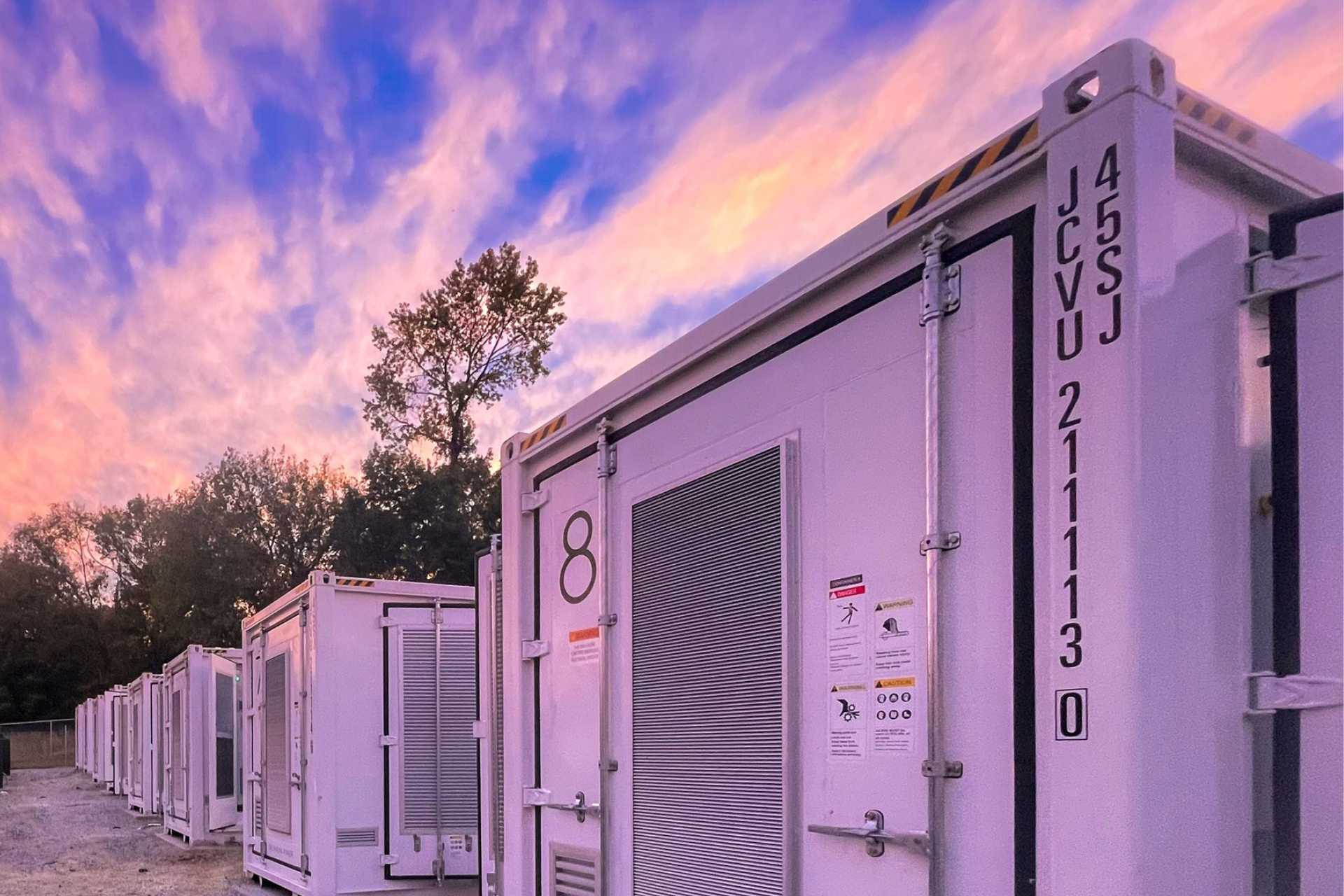
Get the latest climate technology news directly to your inbox.

Photo credit: Lightshift

Photo credit: Lightshift
In a first-of-a-kind program announced this morning, energy storage company Lightshift Energy will deploy a fleet of grid-scale battery systems across at least nine Massachusetts utilities. The move comes via a partnership with a joint action agency for municipal utilities.
The Massachusetts Municipal Wholesale Electric Company, which serves 20 locally-owned, nonprofit utilities in the state, issues tax-exempt revenue bonds to help its members finance grid projects, and will do so for up to 50 megawatts of Lightshift battery energy storage systems.
- The top line: The program’s unique setup involves centrally-procured and centrally-implemented battery storage systems, and aims to create a blueprint for other joint action agencies and utilities to more easily and efficiently deploy storage.
- The nuts and bolts: Lightshift was chosen through a solicitation process that MMWEC conducted in late 2022, and will develop, own, and operate all of the projects deployed through the partnership. The storage systems will primarily be designed for peak shaving services — the battery system will charge during off-peak hours, and discharge during peak hours daily. Of the 10 sites currently contracted and underway across the state, four are already under construction and expected to come online later this summer.
- The current take: The benefit of the projects goes well beyond the estimated cost savings from peak shaving services, Lightshift managing partner and co-founder Mike Herbert told Latitude Media. “By dispatching these assets during the peak hours of the year, they are offering a real source of capacity in a market that is projected to be capacity constrained,” he said. And reducing flows on the transmission lines during those hours has the knock-on effect of opening up interconnection capacity for new generation and new load, he added: “There’s a ton of these macro, full-power system benefits that the fleet of batteries offer to the entire region.”
The program is a voluntary one, Herbert explained. MMWEC, which represents half of the state’s municipal utilities, procured the storage and set up the opportunity for its members to participate. Lightshift provides services directly to individual utility members, he added, but the centralized nature of the program will ultimately make the deployments much smoother.
“The idea is to get these first ones in the ground, and then continue to work with members to identify opportunities for replication,” Herbert said. Once everything is ironed out for both interconnection and commercial structure, he added, “the rollout of additional projects becomes very efficient.”
From podcast ads to drop-in episodes, see how you can position your brand as a thought leader on the Catalyst and Carbon Copy podcasts.

From podcast ads to drop-in episodes, see how you can position your brand as a thought leader on the Catalyst and Carbon Copy podcasts.

From podcast ads to drop-in episodes, see how you can position your brand as a thought leader on the Catalyst and Carbon Copy podcasts.

From podcast ads to drop-in episodes, see how you can position your brand as a thought leader on the Catalyst and Carbon Copy podcasts.

Under the hood
Herbert pointed to the battery procurement process as an example of the program’s potential for replicability.
(Most projects deployed for MMWEC members will use four-hour batteries, though some will use the three-hour versions that come at a slightly lower price point, depending on local need.)
Lighshift has a “master supply agreement” that sets out standard terms and conditions of battery procurement for the program. When a project reaches the “notice to proceed” stage with a member utility, Lightshift has a blueprint for both supply agreements and long-term service agreements.
“We have everything we need on the battery supply side that’s already been pre-wired and ready to go,” Herbert said. “We put the project specifics into it and any nuances of the individual sites, but by and large, through that master supply approach, we’ve made the procurement of the batteries very efficient and easy for everybody.”
That helps Lightshift keep to fairly accelerated timelines and allows them to deploy quickly and efficiently when other member utilities step up, he added: “We’ve unlocked a really nice model for this type of deployment.”
Though all of the MMWEC utility projects have some degree of standardization, different communities have different needs for their energy storage systems, Herbert said. And the utilities themselves vary greatly in size: between 10 MW on the system to 200 MW. That means that some utilities might end up developing more than one BESS site.
In Groton, a town of just over 11,000 in northern Massachusetts, the BESS deployment will not just provide peak shaving services but also serve as backup power to an elementary school. Meanwhile, 30 miles southeast in Wakefield, Lightshift’s energy storage deployment is designed to be part of a municipal microgrid.
Herbert emphasized that the utilities in this centralized project are nonprofit entities, “essentially extensions of local government.” Their top objective is to save money for their customers and keep electricity costs low, he added. Lighshift anticipates the peak-shaving capabilities will save utilities in the program around $200 million over the lifetime of the projects.
“Being able to realize savings like that for such a large number of utilities across such a broad footprint in Massachusetts I think really speaks to this opportunity, and how unique it is,” Herbert said. “We’re really excited…the opportunities that this creates for the region at large as a means to provide needed capacity.”





